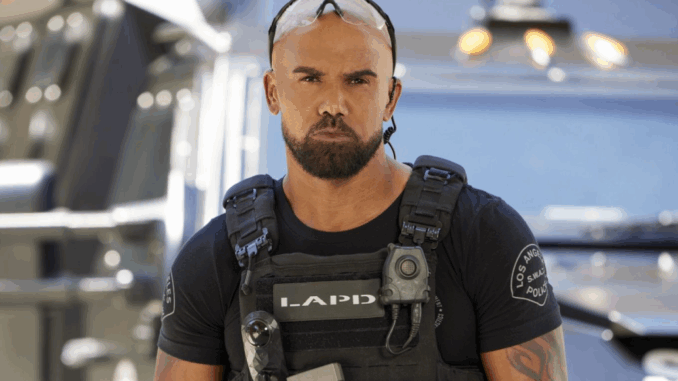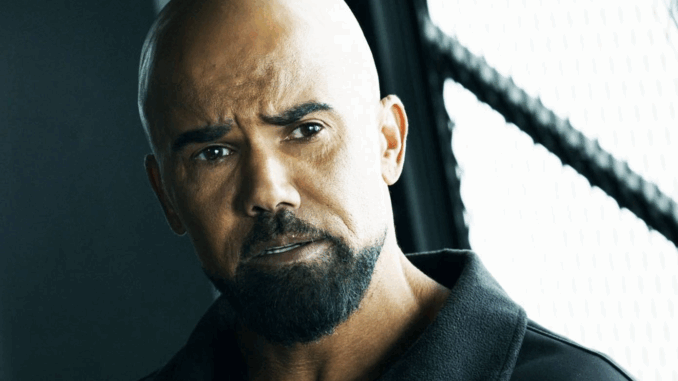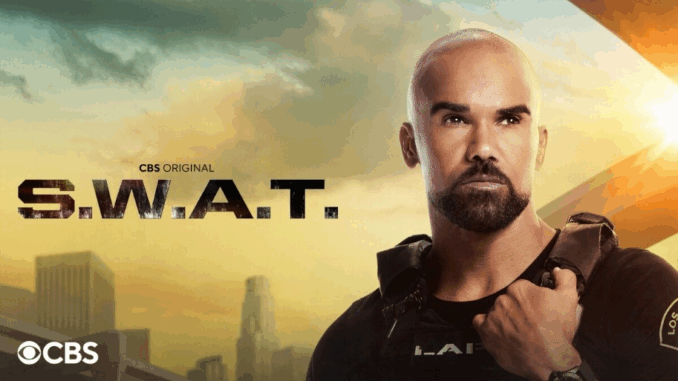
Who Dies in S.W.A.T? All Dead Characters and How They Passed Away
If you’re a S.W.A.T. fan, you already know this show doesn’t hold back when it comes to drama, action, and emotional punches. Between explosive missions and life-or-death choices, we’ve seen some shocking character deaths over the years. But who exactly dies in S.W.A.T. — and how?
Let’s take a deep dive into every major death in the series, the circumstances behind each one, and how those losses shaped the story moving forward.
The Reality of Death in S.W.A.T.
Unlike many action shows that shy away from killing off major characters, S.W.A.T. keeps things brutally realistic. It reminds us that in high-risk law enforcement, every mission can be your last. Some characters fall in the line of duty, while others meet tragic ends off the field. Each death hits differently — and leaves a lasting mark on the team.
Officer Erika Rogers – The Most Heartbreaking Loss
One of the most devastating deaths in S.W.A.T. came in Season 4 when Officer Erika Rogers, played by Lyndie Greenwood, was tragically killed during a mission.
Erika was introduced as a bright, ambitious rookie who joined Hondo’s team after proving herself during training. She was fearless, loyal, and had incredible chemistry with her teammates — especially Chris.
Sadly, during a raid on a human trafficking ring, Erika was caught in a gunfight and fatally shot. Her death was sudden and brutal — a reminder that no one is truly safe in this job.
The aftermath of her death hit the entire team hard, particularly Chris, who blamed herself for not being there to protect her. Fans were heartbroken, as Erika had quickly become a fan favorite.
Officer Terry Luca – A Tragic Family Death
While not a team member, Terry Luca, the younger brother of Officer Jim Street’s best friend and teammate, David “Deacon” Kay’s comrade, met a tragic fate.
Terry was a former S.W.A.T. officer who left the team due to a career-ending injury. His unexpected death was revealed in an emotional storyline, forcing the team to confront their own mortality and the personal toll of the job.
His passing also pushed Luca into a more reflective phase, leading to major growth in his character arc.
Chris Alonso’s Mentor – A Death That Defined Her Path
Before joining Hondo’s team, Chris Alonso was deeply influenced by her mentor, an older female officer who tragically died in the line of duty. Though her mentor’s death occurred before the events of the show, it heavily shaped Chris’s motivation to succeed — and to be a voice for women in law enforcement.
This unseen death served as a foundation for one of the show’s strongest female characters, showing how personal loss can fuel purpose.
Commander Robert Hicks’ Son – A Shocking Twist
One of the show’s most gut-wrenching subplots involved Commander Robert Hicks, played by Patrick St. Esprit, and the death of his son.
Hicks’ son, a young officer himself, tragically died years before the series begins. His death isn’t shown on screen but is frequently mentioned as a source of pain for Hicks. This backstory gives him incredible depth, explaining his fatherly approach toward the team and his no-nonsense leadership style.
The grief he carries is palpable — a quiet yet powerful thread running through his character arc.
The Losses from Hondo’s Past
Hondo, played by Shemar Moore, has faced more than his share of loss. Before becoming team leader, Hondo witnessed fellow officers die during missions gone wrong, some of which he blames himself for.
One of the most significant unseen deaths tied to his past is his former partner, Mike Plank, who died in a shootout years before the show’s timeline. While we don’t see it happen, it’s referenced several times and gives insight into Hondo’s protective instincts and his tendency to shoulder guilt for every casualty.
Villains Who Met Their End
Not all the deaths in S.W.A.T. belong to the good guys. Over the seasons, we’ve seen numerous antagonists and criminals meet their end — some justly, others tragically. Here are a few notable ones:
-
Juri Drazen, the ruthless arms dealer, was taken down in a high-stakes standoff with Hondo’s team.
-
Darryl’s Father, Leroy, nearly met his end multiple times before reforming his life. While he ultimately survived, his criminal past resulted in several close brushes with death.
-
Carl Luca, an old contact from Luca’s time in Europe, died in a betrayal gone wrong, highlighting how dangerous even off-duty work can be.
Each villain’s death served to underline one of the show’s recurring themes: violence always leaves a cost behind.
Tragic Civilian Deaths That Hit Hard
Some of the most emotional episodes of S.W.A.T. aren’t about cops or criminals — they’re about civilians caught in the crossfire.
One unforgettable storyline involved a young boy who died during a hostage rescue. Despite the team’s best efforts, the situation spiraled out of control, leaving Hondo questioning his leadership.
Another involved a pregnant woman killed during a gang shootout, a moment that broke Deacon’s heart and fueled his mission to take down the people responsible.
These deaths remind viewers that the show isn’t just about gunfights — it’s about the emotional aftermath of real tragedy.
Street’s Foster Brother – A Painful Goodbye
One of the most personal deaths for Officer Jim Street (played by Alex Russell) was that of his foster brother, Nate Warren.
Nate was a fellow cop and Street’s closest friend. In Season 3, Nate was killed while undercover, trying to expose a criminal organization from the inside. His murder devastated Street, who spiraled emotionally afterward, blaming himself for Nate’s fate.
This death wasn’t just shocking — it was transformative. It pushed Street to reevaluate his priorities, his loyalty to the team, and his career path.
Chris Alonso’s Exit – A Farewell Without Death
While Chris didn’t die, her departure in Season 5 hit fans like a death scene. After years of dangerous missions, she decided to leave the team and run a safe house for women — a nod to her compassionate and fearless spirit.
Her exit was peaceful but emotional, showing that in a show filled with loss, sometimes walking away is the bravest thing you can do.
How Death Shapes the S.W.A.T. Team
Every death in S.W.A.T. has one purpose — to show the cost of being a hero. Whether it’s Erika’s sacrifice, Nate’s undercover death, or the countless unnamed officers who’ve fallen, each loss tests the team’s resilience.
The show uses death not for shock value, but to explore grief, loyalty, and brotherhood. It’s about how these men and women push through unimaginable pain to keep protecting others.
Why Fans Feel the Deaths So Deeply
What makes S.W.A.T. special is how much fans connect with the characters. When someone dies, it’s not just a plot twist — it feels personal.
The writers take time to build emotional bonds between the audience and the characters, so when tragedy strikes, it resonates. You feel the weight of every loss, every folded flag, every moment of silence in the locker room.
Behind the Scenes: Why Characters Get Written Off
In television, deaths can serve both story and production purposes. Sometimes actors leave due to scheduling conflicts or new opportunities, and the writers craft emotional exits to make it feel organic.
Lyndie Greenwood’s exit as Erika Rogers, for example, was both a creative choice and a narrative one — her death gave the team new emotional depth and reminded viewers of the show’s realism.
The Theme of Sacrifice in S.W.A.T.
If there’s one thread tying all these deaths together, it’s sacrifice. Every fallen character, from rookies to veterans, dies with purpose — protecting someone, saving lives, or standing up for what’s right.
It’s a constant reminder that S.W.A.T. isn’t just about action; it’s about honor, courage, and the ultimate price of service.
Will There Be More Deaths in Future Seasons?
As the show continues, it’s almost certain that more characters will fall. That’s the nature of this world — danger never disappears.
But one thing’s for sure: every death will matter. The writers never kill for shock value. They do it to evolve the team and deepen our emotional investment.
Fans should brace themselves — because if history tells us anything, S.W.A.T. doesn’t play it safe.
Conclusion
So, who dies in S.W.A.T.? Too many heroes to count — and every one leaves a scar. From Officer Erika Rogers’ heartbreaking sacrifice to Nate Warren’s undercover death, each loss shapes the soul of the series.
It’s what makes S.W.A.T. more than just another cop show. It’s a tribute to real-life bravery, reminding us that behind every uniform is a person — one who knows that every goodbye might be their last.
The deaths hurt, yes, but they also give the show its emotional heartbeat — and keep fans watching, crying, and cheering for the survivors who keep going no matter what.
FAQs
1. Who was the first major character to die in S.W.A.T.?
The first significant on-screen death was Officer Erika Rogers in Season 4, during a gunfight while rescuing hostages.
2. Does anyone from Hondo’s main team die later in the series?
While core team members face danger constantly, most survive. However, several secondary officers and close allies die in later seasons.
3. How did Nate Warren die in S.W.A.T.?
Nate, Street’s foster brother, was killed while working undercover. His death deeply affected Street’s mental state and his loyalty to the team.
4. Why did the show kill off Erika Rogers?
Her death served as a turning point for the team and reinforced the show’s realism — even the strongest, most promising officers aren’t immune to tragedy.
5. Will there be more major deaths in future S.W.A.T. seasons?
Most likely, yes. The show continues to push high-stakes missions, and each new season tends to feature emotional goodbyes or shocking twists.


